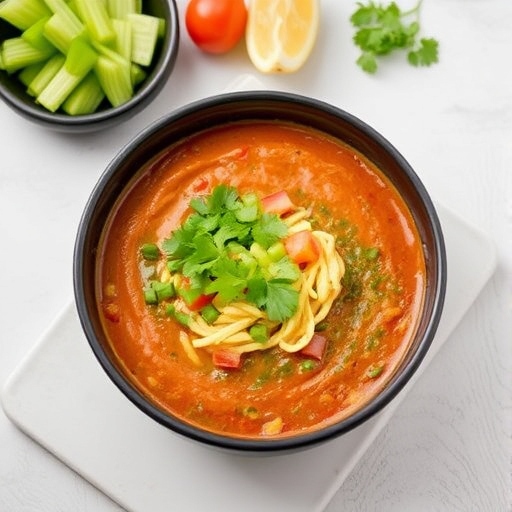Introduction
Rotel Dip is a creamy, cheesy, and slightly spicy dish perfect for parties, game days, or casual get-togethers. Made with just a handful of ingredients, including Rotel tomatoes, cheese, and ground meat, this crowd-pleaser is quick to whip up and endlessly versatile. Whether served with tortilla chips, crackers, or veggies, Rotel Dip guarantees smiles all around.
Table of Contents
The Story Behind Rotel Dip
Rotel Dip is a Southern classic born from the beloved Rotel brand of diced tomatoes and green chilies. First popularized in the mid-20th century, this recipe became a hit due to its simplicity and bold flavor. Over the years, it has cemented its place at potlucks and tailgate parties, offering a creamy, zesty experience that complements almost any snack.
The Benefits of Making Your Own Rotel Dip
- Quick and Easy: With minimal prep and cook time, it’s perfect for last-minute gatherings.
- Customizable: Adjust the spice level, meat choice, or cheese variety to suit your taste.
- Affordable: Made with budget-friendly ingredients, it’s an economical crowd-feeder.
- Homemade Freshness: Skip preservatives by using fresh ingredients.
Essential Ingredients for the Perfect Rotel Dip
- 1 pound ground beef, sausage, or turkey (your choice of protein)
- 1 (10-ounce) can Rotel diced tomatoes with green chilies
- 16 ounces Velveeta cheese, cubed
- Optional spices: ½ teaspoon garlic powder, ½ teaspoon onion powder
- Optional add-ins: Black beans, corn, or jalapeños
Cultural History of Ingredients
- Rotel Tomatoes: Introduced in the 1940s, these diced tomatoes with green chilies have become a pantry staple in Tex-Mex cooking.
- Velveeta Cheese: A product of the 1920s, Velveeta is prized for its creamy, meltable consistency.
- Ground Meat: A versatile protein option, it adds heartiness to the dip and absorbs the spices beautifully.
Equipment You’ll Need
- Large skillet or saucepan
- Wooden spoon or spatula
- Slow cooker (optional, for keeping the dip warm)
- Serving bowl
Step-by-Step Instructions for Rotel Dip
Step 1: Cook the Protein
- Heat a large skillet over medium heat.
- Add ground meat and cook until browned, breaking it up with a wooden spoon.
- Drain excess fat and set aside.
Step 2: Combine Ingredients
- In the same skillet, add the Velveeta cheese cubes and the can of Rotel tomatoes (including juices).
- Stir continuously over low heat until the cheese melts and combines with the tomatoes.
Step 3: Add Meat and Seasoning
- Return the cooked meat to the skillet.
- Mix in garlic powder, onion powder, or any additional spices you like.
Step 4: Serve Hot
- Transfer the dip to a serving bowl or slow cooker set on “warm.”
- Serve with tortilla chips, crackers, or veggie sticks.


Suggestions for Serving and Storing
- Serving Ideas:
- Pair with tortilla chips for a classic combination.
- Use as a topping for baked potatoes or nachos.
- Add to tacos or burritos for extra creaminess.
- Storage Tips:
- Store leftovers in an airtight container in the refrigerator for up to 3 days.
- Reheat in the microwave or on the stove, adding a splash of milk to maintain the creamy texture.
Chef Simon’s Tips for Rotel Dip
- Use Fresh Spices: Freshly ground black pepper or crushed garlic elevates the flavors.
- Double the Recipe: For larger gatherings, this dip is always a hit, so make extra!
- Slow Cooker Hack: Keep your dip warm throughout the event by transferring it to a slow cooker.
Emotional and Psychological Impact of Food
There’s something comforting about a warm, cheesy dip shared with friends and family. Rotel Dip not only satisfies cravings but also creates an inviting atmosphere that brings people together.
Mindful Cooking Techniques
- Focus on the melting process to avoid burning the cheese.
- Taste and adjust seasonings as you cook for the perfect balance.
- Enjoy the aromas of cheese and spices blending into a comforting dish.
Tips for Keeping the Recipe Fresh Longer
- Store any leftover dip in a sealed container to lock in freshness.
- Add a splash of milk when reheating to restore creaminess.
- Freeze extra portions for up to one month in freezer-safe bags.
Advanced Culinary Terms and Techniques
- Emulsification: The process of melting cheese and blending it with Rotel tomatoes ensures a smooth, creamy dip.
- Layering Flavors: Cooking the ground meat with spices before adding to the cheese mixture creates depth.
Healthy Ingredient Alternatives
- Low-Fat Option: Use reduced-fat cheese and ground turkey for a lighter version.
- Dairy-Free Version: Substitute Velveeta with a plant-based cheese alternative.
- Vegetarian-Friendly: Replace meat with black beans or roasted vegetables.
More Serving Ideas
- Top with fresh jalapeños, diced onions, or cilantro for added flavor.
- Serve alongside guacamole and salsa for a Tex-Mex dip trio.
- Add a dollop of sour cream on top for a cool contrast to the heat.
Common Issues and Solutions
- Dip Too Thick: Add a splash of milk or chicken broth to thin it out.
- Cheese Clumps: Ensure the heat is low and stir consistently to avoid uneven melting.
- Too Spicy: Balance the heat by adding more cheese or a splash of cream.
Variations to Try
- Chili Rotel Dip: Add chili seasoning and beans for a heartier version.
- Spicy Bacon Rotel Dip: Mix in cooked, crumbled bacon and extra jalapeños.
- Veggie Rotel Dip: Include sautéed mushrooms, bell peppers, or zucchini for added texture.
Nutritional Information and Health Benefits
- Calories: Approximately 200 per serving
- Protein: High due to ground meat and cheese
- Calcium: Cheese provides a good source of calcium
The Art of Pairing Rotel Dip
- With Drinks: Serve alongside margaritas, beer, or iced tea.
- With Snacks: Pair with crunchy chips or soft pretzels.
- With Meals: Use as a sauce for enchiladas or a topping for burgers.
Weather and Recipe Outcome
Rotel Dip shines at gatherings regardless of the season, but its warm, gooey texture makes it particularly comforting during colder months.
Other Dips to Explore
- Spinach Artichoke Dip
- Buffalo Chicken Dip
- Queso Blanco
- Seven-Layer Dip
Focus on Tools and Equipment
- Skillet: For cooking meat and melting cheese evenly.
- Slow Cooker: Keeps the dip warm and ready to serve.
- Mixing Spoon: Ensures the ingredients combine thoroughly.
Frequently Asked Questions (with answers)
Q: Can I make Rotel Dip ahead of time?
A: Yes, prepare the dip and refrigerate. Reheat before serving.
Q: How do I prevent the cheese from burning?
A: Cook on low heat and stir frequently to prevent sticking.
Q: Can I freeze Rotel Dip?
A: Yes, freeze in an airtight container for up to a month. Thaw and reheat gently.
Conclusion
Rotel Dip is a simple yet irresistible dish that combines cheesy, spicy, and savory flavors into one bowl of deliciousness. Perfect for parties, movie nights, or casual snacking, this recipe is a must-try for any occasion. Once you’ve mastered this classic dip, you’ll find yourself reaching for it time and time again!

